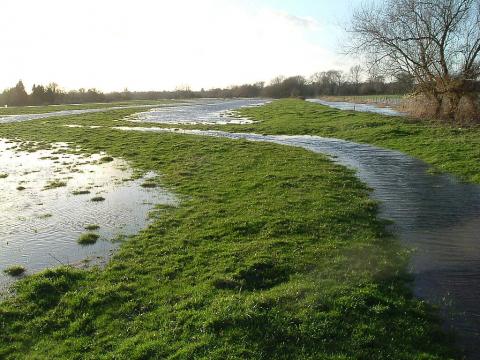A water meadow is an area of pasture within a river valley which is deliberatedly flooded to encourage the growth of grass, the water deposits nutrient encouraging better grass growth and enables early production of animal fodder and an increased number of hay crops per year.
Water meadows can be found in Europe, mainly in Northern Italy, Switzerland and England. They are provided with channels to carry water on to the pasture and then to drain it off again. In the ordinary way the meadow is not flooded.

The intention is to keep a trickle of water flowing through the roots of the spring growth, just enough to warm them and protect from frosts. The result is faster grass growth and an earlier first bite several weeks earlier if the spring is cold.
Water meadows were formed in river valleys; most water meadow systems are located on alluvial soils of the floodplain, or the adjacent terraces. This valley bottom design is termed ‘bedwork’ where water is directed from a main river, often via a canal or ‘maincarrier’ through control structures (weirs, hatches, sluices etc) into channels tapered so as to spill down the sides of specially constructed ridges, called ‘panes’.
Water meadows are rarely used for irrigation, these low lying pastures are naturally moist and the problem is usually in draining them well enough to prevent stagnation.For over 300 years water meadows supplied early grazing and the first, most valuable hay crop. They have almost all ceased operation due to the cost of the labour required to maintain them and the difficulty of working them with machinery.